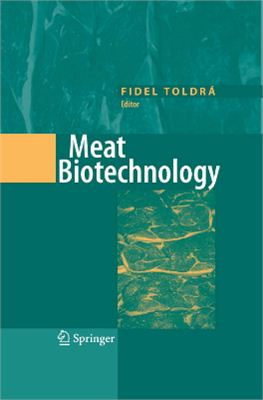Department of Food Science Instituto de Agroqu?mica y Tecnolog?a de
Alimentos (CSIC), Spain, Burjassot (Valencia), 2008, XIV, 502 p. 49
illus.
ISBN: 978-0-387-79381-8.
Meat and meat products are crucial foods in weste countries. However, meat biotechnology is not as comprehensively covered as other areas of food biotechnology. The goal of this book is to provide the reader with recent developments in meat biotechnology.
Meat and meat products constitute some of the most important foods in weste societies. However, the area of meat biotechnology is not as comprehensively covered as other areas of food biotechnology. Missing from this area are the recent developments for better sensory and nutritional quality as well as improved safety.
The main goal of this book is to provide the reader with the recent developments in biotechnology and their applications in the meat processing chain. To achieve this goal, the book is divided into four parts. The first part deals with the use of mode biotechnology applied to farm animals. The second part focuses on the recent biotechnological developments in starter cultures for better meat fermentation. The third part discusses current approaches to improve the quality and nutritional properties of meats. The final part presents the latest advances in protection against foodboe pathogens, and other recent trends in the field. Written by distinguished inteational contributors, this book brings together the advances in such varied and different biotechnological topics.
ISBN: 978-0-387-79381-8.
Meat and meat products are crucial foods in weste countries. However, meat biotechnology is not as comprehensively covered as other areas of food biotechnology. The goal of this book is to provide the reader with recent developments in meat biotechnology.
Meat and meat products constitute some of the most important foods in weste societies. However, the area of meat biotechnology is not as comprehensively covered as other areas of food biotechnology. Missing from this area are the recent developments for better sensory and nutritional quality as well as improved safety.
The main goal of this book is to provide the reader with the recent developments in biotechnology and their applications in the meat processing chain. To achieve this goal, the book is divided into four parts. The first part deals with the use of mode biotechnology applied to farm animals. The second part focuses on the recent biotechnological developments in starter cultures for better meat fermentation. The third part discusses current approaches to improve the quality and nutritional properties of meats. The final part presents the latest advances in protection against foodboe pathogens, and other recent trends in the field. Written by distinguished inteational contributors, this book brings together the advances in such varied and different biotechnological topics.

